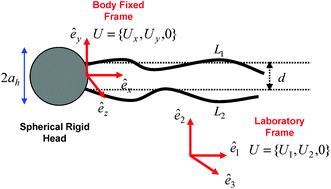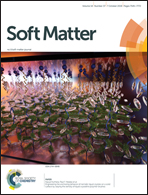Effect of interfilament hydrodynamic interaction on swimming performance of two-filament microswimmers
Abstract
The motion of two-filament artificial swimmers is modeled by assuming interfilament coupling via hydrodynamic viscous drag. The filaments are assumed to be in parallel and attached to a rigid spherical head. The boundary actuation is assumed to occur at the head-filament joint through an external oscillatory magnetic field and the filament motion is taken to be confined to the flexural plane. The hydrodynamic coupling modifies the viscous drag on one filament due to motion of the other. Assuming in-phase, small amplitude, low frequency actuation the swimmer performance metrics (propulsive thrust, propulsion speed and energy efficiency) are calculated using Lauga's formulation for the swimmer kinematics coupled with filament dynamics. The results are compared with the performance of a single-filament and an uncoupled two-filament swimmer. The hydrodynamic coupling is found to enhance the performance measures in a parametric window. Also, it is found that there occurs an optimum combination of head size and swimmer length that can maximize the microswimmer performance. The findings are in agreement with the experimental observations on multi-filament artificial microswimming.



 Please wait while we load your content...
Please wait while we load your content...